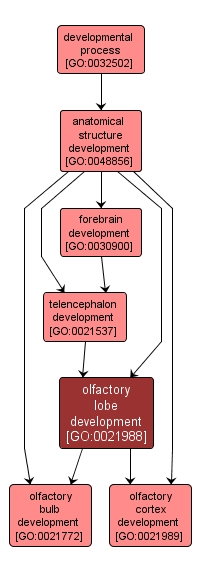GO TERM SUMMARY
|
| Name: |
olfactory lobe development |
| Acc: |
GO:0021988 |
| Aspect: |
Biological Process |
| Desc: |
The progression of the olfactory lobe over time from its initial formation until its mature state. The olfactory lobe is the area of the brain that process the neural inputs for the sense of smell. |
|

|
INTERACTIVE GO GRAPH
|














